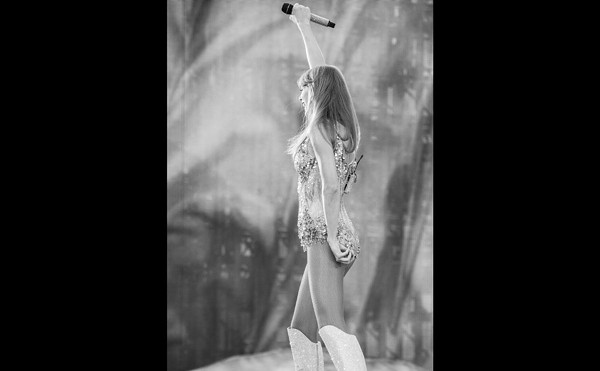|
Evans Mirageas has been Cincinnati Opera's artistic director for almost three years, but this is the first season that he can truly call his own.
Former Artistic Director Nic Muni set the 2006 and 2007 seasons, and Mirageas brought his formidable network of contacts to complete casting of performers and technical staff.
For the 2008 season, Mirageas oversaw all production aspects, and although two of the four operas — Madame Butterfly and La Traviata (July 23, 25 and 27) — are standard rep, the schedule includes a new work, Florencia en el Amazonas (July 10 and 12), and a rarely heard version of an operatic chestnut, Lucie de Lammermoor (June 26 and 28).
The season opens with Puccini's Madama Butterfly from New York City Opera staged by Mark Lamos, the production's original director, and conducted by Edoardo Müller. The production was broadcast on PBS in March, garnering raves for its exquisite design and direction, and especially for Shu-Ying Li's wrenching portrayal of the doomed geisha.
Li's appearances with CO are due in part to Mirageas' legendary network. Shortly after the originally-cast soprano cancelled, he was on a plane to see her perform in New York.
Shu-Ying Li debuted as Butterfly's heroine Cio-Cio-San in 2005 in this same production, but she could hardly have chosen a more auspicious — or more nerve-wracking city than Tokyo. She had more than the usual case of jitters, being a Chinese singer performing for a Japanese audience.
"They applauded politely at the end of the first act and I thought, OK, they don't like me that much.
But by the end, they stood applauding and nobody wanted to leave. (It's) not like in America. If they like you, you know it."
Since then she has sung Butterfly many times, and each performance deepens her characterization.
"I never get tired of her," she says. "I sing with freshness with different colleagues, especially with the tenor (Frank Lopardo) who has such an incredible voice."
The production itself is breathtaking, but Mark Lamos insists "all the focus is on the acting. There's this exquisite lighting, abstract cloudscapes, but it's very still. It has to be done by powerful singing actors."
Translucent sliding doors, an intensely blue sky and red sun allow for "high realism inside a great abstraction," Lamos says. "The lighting especially in its charge of color and absence of color made us realize how strong, how powerful the piece really is."
There is meaning in the simplest detail, Shu-Ying Li says, and Butterfly's love for the boorish American naval officer feels "stronger and more real. Lamos has brilliant ideas to show each movement and the emotion behind it."
The scene shifts from a luminous Nagasaki to a decaying estate in 17th-century Scotland for Lucie de Lammermoor, the French-language version of Donizetti's most famous opera.
Heading the cast are the soprano Sarah Coburn, who dazzled audiences two years ago in Tales of Hoffman and Un Ballo en Maschera, and tenor Mark Panuccio, singing his first leading role for CO.
Mark Streshimsky, director of the acclaimed Tales of Hoffman production, returns to direct, as does conductor Jean-Marie Zeitouni.
Donizetti himself helped to prepare the French edition for a Paris performance in 1839. The basic plot remains intact but many characters have changed — some are amplified, others scaled back or eliminated. Audiences will hear all the familiar music, along with a new aria for Lucie and a rarely performed scene between the hero Edgar and Lucie's brother Henri.
The French version is a darker take on an already gloomy tale of love and vengeance, an approach that makes the characters more accessible, especially Lucie's brother Henri, says Mark Streshimsky.
"I find this version more interesting because it's more about the human interactions and less about the political," Streshminsky says. "Lucie's brother Henri is conflicted — he needs Lucie to marry Arthur to save the family from ruin but he can see what it's doing to her. He actually feels great remorse, which you don't hear in the Italian version."
Panuccio sang the hero Edgardo this past spring for Arizona Opera, and after this run of Lucie, he'll be one of very few tenors to have sung the role in both versions. He admits that learning the French version is "a challenge for me when I have the Italian so ingrained, but it's a wonderful challenge because I love singing this bel canto music."
His French character is essentially the same, but his interactions with other characters are different, especially with Lucie. With her companion Alisa edited out, Lucie is completely isolated and even more of a pawn, "so I find myself being more sympathetic to her," Panuccio says.
Will there be any surprises in opera's most famous mad scene? Streshimsky says he'll wait for rehearsals with Sarah Coburn.
"I'm very much a director who works with singers, helping them find their way through the scene," he says. "That idea may change 180 degrees, but it's always a chance to create."
He's willing to give away one detail: no blood on the dress in the mad scene.
Cincinnati Opera recently announced that Hei Kyung Hong withdrew from La Traviata, the season finale. Her replacement is Cuban-American soprano Eglise Gutierrez, a splendid coloratura soprano who is coaching the role of Violetta with the same soprano who coached Shu-Ying Li for Butterfly: Renata Scotto.
Evans Mirageas: casting phenom.
MADAME BUTTERFLY will be performed by Cincinnati Opera at 7:30 p.m. Wednesday and Friday and 3 p.m. Sunday at Music Hall. Buy tickets and find nearby bars and restaurants here.






